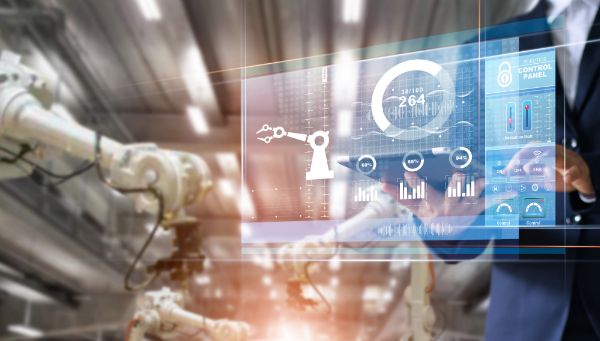Demystifying the struggles of adopting AI in the Manufacturing Sector

“For half of the businesses in the Manufacturing sector, AI adoption is still an unexplored area with a hand full of complex workflows and a mind full of uncertain queries.”
A recent study conducted by the MAFI Foundation revealed that only 5% of manufacturing firms have succeeded in identifying AI opportunities and have a roadmap ready to capitalize on their business. Within this context, it pays to identify the reasons for lower AI adoption rate in the manufacturing sector and how advancement in AI practice is helping to change this narrative to embrace technological change.
Top 3 reasons for the lower AI adoption rate in the Manufacturing sector
- Lack of identifying organizational imperatives: It is an accepted truism that people are at the center of executing any strategic vision, but such a truism holds only when a vision exists in the first place. In the current scenario, over half of the firms in the manufacturing sector have indicated that they do not even have a plan underway to integrate AI into their value creation paradigm. Thus, leaders in the manufacturing sector can use this opportunity to step up and create a new vision to take their business to the next level.
- Solution approach: The effort might require the businesses to invest in capacity building, training, confronting the organization’s culture, striking out and finding new partnerships, and creating plans for their data assets. The result, however, will be a nimble but data-driven organization with an upgraded arsenal of analytical tools can succeed even under the most challenging conditions.
- Underlining mismatch and expectation in the AI adoption process: The second piece of the puzzle centers around the mismatch in expectations on AI within the manufacturing sector. Expectations on how AI can be developed and implemented within manufacturing companies in the current scenario can vary widely, from the realm of excessive optimism to the realm of complete pessimism. Meanwhile, the domain of AI itself continues to evolve rapidly, with new infrastructures and services coming to life, thanks to the competition between a dazzling array of technology players across the world. Solution approach: There is a growing need for Analytics Translation across organizations, where the expertise needs to understand and communicate advanced analytical insights to a variety of stakeholders to become a key factor towards successful AI adoption. Such translators may emerge within or outside of the organization and bridge the gap between mathematics, cutting edge computing, and the business’ balance sheet. Their enduring value comes through shaping a data-driven culture that eventually enables new paradigms of decision making for firms.
- Ability to create and sustain the value proposition: The third reason revolves around the context. Any tool or any decision can only be useful and applied correctly when it suffices the context. The success of AI adoption within different manufacturing firms depends upon the ability to create and sustain value right from the beginning. Moreover, it requires the right data to be matched with a certain problem before the right solution makes an appearance. Solution approach: Given that differential levels of technical debt accumulate within firms over years, integration of efforts with in-house systems and the seamless interlinking of data flows would enable a fluid adoption of AI to be highly contextual. Moreover, it requires an understanding of the business that would go beyond traditional management consulting or general IT-based solution offerings.
For any growing business in the manufacturing sector to accelerate AI deployment, the right partnerships that are built on a shared contextual understanding will go a long way in mitigating any adoption risks for AI. Thus, identifying the pain-points and finding a solution to the technological problems using an AI mindset is paramount and can do wonders to scale bigger in the manufacturing business.